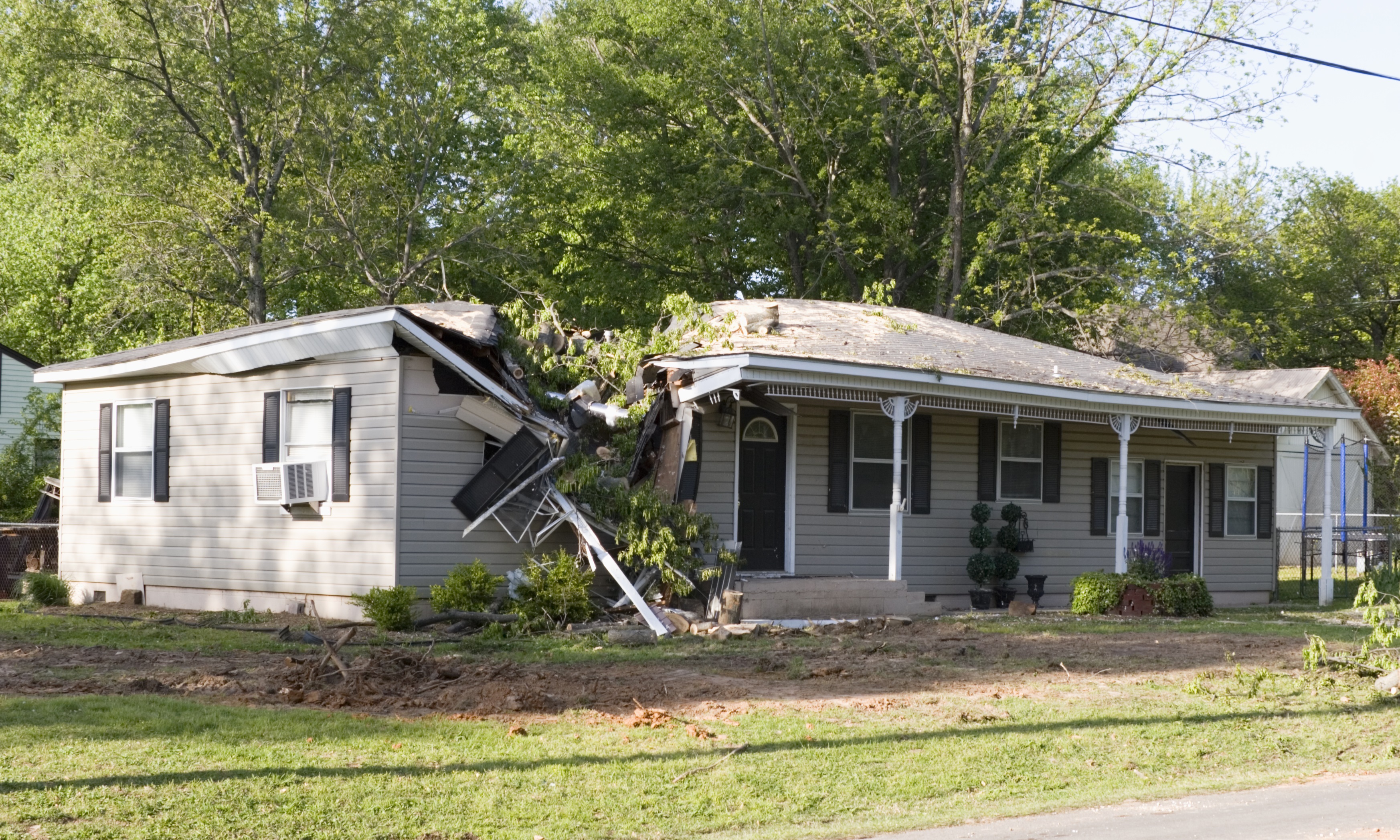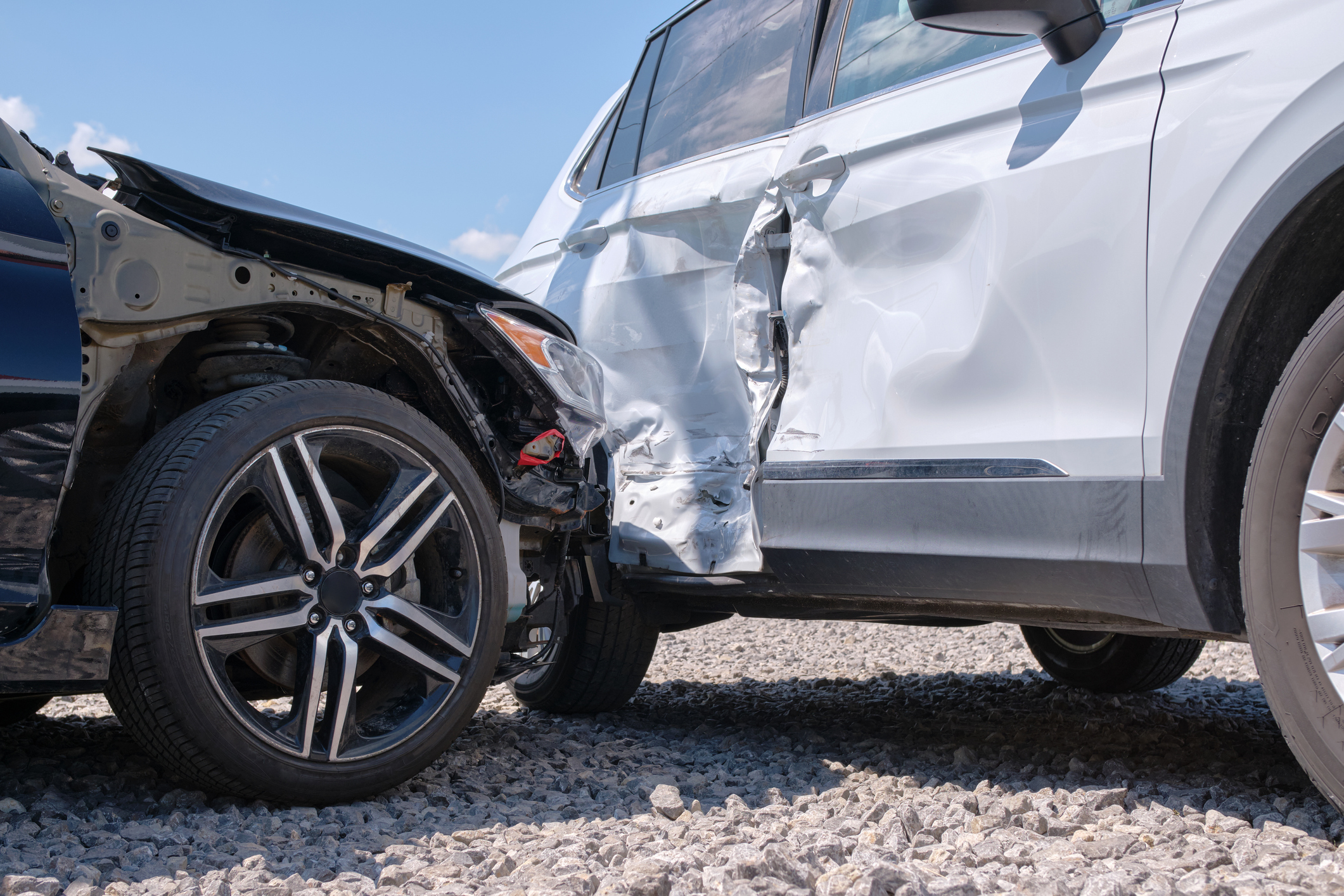Is Your Insurance Coverage Up to Date?
Costs are rising to repair or replace your most valuable assets. Make sure your home and vehicles are adequately insured.


Imagine that after dutifully paying your auto or homeowners insurance premium for years you finally try to make a claim, only to get a nightmare answer: Your insurer won’t pay for all the damages or, even worse, won’t cover you at all.
It’s a situation that happens more often than you may think. “People usually discover this shortage only when they’re filing a claim,” says Mary Parsons, executive vice president of personal risk services at Chubb. “By then, it’s too late.”
Auto and homeowners insurance policies limit how much they’ll pay for damage and other losses. These policies also have exclusions that catch people off-guard. For that reason, it’s important to understand how well you’re protected and whether there are any gaps you should fill before you run into an insurance issue.
From just $107.88 $24.99 for Kiplinger Personal Finance
Become a smarter, better informed investor. Subscribe from just $107.88 $24.99, plus get up to 4 Special Issues

Sign up for Kiplinger’s Free Newsletters
Profit and prosper with the best of expert advice on investing, taxes, retirement, personal finance and more - straight to your e-mail.
Profit and prosper with the best of expert advice - straight to your e-mail.
Property damage is a hot topic these days, as climate change has led to unpredictable and damaging weather patterns and more-intense natural disasters, ranging from wildfires in California to blizzards in the Midwest to hurricanes in the Southeast. Nearly one-third of homeowners say they’ve been negatively impacted by a harmful weather event over the past five years. The vast majority of those affected expect it will happen again soon, according to a 2023 survey from the Insurance Information Institute (III) and Munich RE.
The risk of weather damage is so high in some areas that major insurers are rethinking whether to provide coverage. For example, Allstate and State Farm recently decided to stop selling new property insurance policies in California, while insurers are also restricting coverage in Florida. Auto insurers, meanwhile, have their own concerns. There’s been a post-pandemic surge in dangerous behavior, such as speeding and impaired driving, and traffic fatalities are at a 16-year high.
You can’t prevent every accident or weather event, but you can manage the financial hit with the right insurance. If you haven’t checked your policies recently, use our guide to make sure you’re safely covered.
Homeowners insurance
For most Americans, their home is their most valuable asset. If you still have an outstanding mortgage, the lender likely requires you to have proof of insurance. And if you own the property outright, chances are you want to protect it. But even if you have insurance, some coverage issues could take you by surprise.
Rising construction costs. Your homeowners insurance will pay to repair or rebuild your house after damage from a covered cause, such as fire, wind or vandalism. However, the policy sets a limit on how much it will pay. The limit should be the cost of rebuilding your entire home.
Give some thought to the last time you compared your policy limit to the value of your house, Parsons says. The median sales price of homes is up by about one-third compared with prices before the COVID-19 pandemic, even after factoring in a housing-market slowdown during 2023. If you underinsure your home and it’s destroyed, your policy won’t cover all the repairs.
Parsons says your policy should cover the replacement cost to rebuild your home, not its market value. The former could be higher due to rising construction costs. “There have been double-digit increases in the cost of materials like lumber, paint and copper plumbing, not to mention labor shortages,” she says. Ask your insurer to estimate your home’s replacement value, and make sure it matches your policy limits. You could also set up an inflation guard on your policy, which automatically increases coverage when you renew each year to keep up with rising costs.
Loretta Worters, spokeswoman for the Insurance Information Institute, says that after a major weather event, construction costs can soar even higher as everyone rebuilds at the same time. She suggests adding an extended replacement cost coverage endorsement to your policy. An endorsement can pay an extra 5% to 25% above the policy’s limits to protect against a spike in costs, she says.
Furnishings and upgrades. Whenever you make significant upgrades and improvements to your home, you should let your insurer know so it can adjust your coverage.
Bill Jeppe, personal lines manager for CBM Insurance, an independent insurance agency in New Castle, Del., says condo owners frequently overlook this because they believe their building association will cover all repairs. Your condo homeowners association (HOA) likely provides coverage for damage outside your unit, including your walls, as well as your cabinets, countertops and flooring as long as they haven’t been altered.
However, the association won’t pay to repair any upgrades and renovations to your condo, Jeppe says. He recommends keeping track of any upgrades you’ve made, along with those made by previous owners, to get them covered.

An overhead view of homes damaged by Hurricane Ian in Florida.
Living expenses. If your home is unlivable as it is undergoing repairs, your homeowners policy should pay for temporary housing, including hotel bills and restaurant meals. Worters recommends checking how much coverage you have for these temporary living expenses.
She says some policies pay a fixed amount — up to 20% of the coverage on your house, for example — while others pay your bills for a limited amount of time, such as one or two years. “Since repairs are taking more time due to supply-chain issues, your coverage for living expenses should be longer,” Worters says.
Personal belongings. Homeowners insurance will pay to replace your belongings if your house is damaged or destroyed in a covered event. The typical policy offers between 50% and 75% of the coverage on your house to replace your belongings. So if you insure your home for $400,000 and the policy offers 50% for personal property, you’d receive up to $200,000 to replace all your belongings. Your insurance policy should also cover your belongings outside the house, protecting against events such as the theft of jewelry from your luggage while you’re traveling.
But to get paid, you’ll need to provide your insurer with an accurate list of everything you own, which may not be easy to recall after a stressful event. “Don’t wait until a storm has thrown everything all over the neighborhood before you try to take stock,” says Dave Phillips, a spokesman for State Farm.
He recommends annually taking inventory of everything you own to have an up-to-date list ready. Phillips also recommends taking photos or videos of your belongings. Apps such as Encircle and HouseBook offer an easy way to keep track of your possessions.
Homeowners insurance policies limit how much they’ll pay per item (up to $1,500, for example). If you have expensive belongings, such as antiques, jewelry or silverware, Phillips says you should consider buying an additional endorsement for those items. If you rent your home, you could buy renters insurance to replace your belongings if they are destroyed or stolen. Jeppe says renters might be surprised at the cost of replacing their belongings if they’re destroyed in a fire or other catastrophe. “People don’t know how much they have until they lose it all.”

Tree damage in a home in the wake of a tornado.
Liability. Although a homeowners insurance policy is primarily designed to protect your home, it should also shield you from lawsuits. If someone gets seriously hurt on your property — from tripping on a broken staircase, for example — they could sue you for damages. If the lawsuit is successful, you could lose your savings, investments and home equity. In most states, they could even garnish your wages.
Your homeowners insurance policy should help cover these legal claims, which will protect your assets. If you can afford it, Jeppe recommends maxing out your liability limits. “The difference in premium to go from $100,000 in coverage to $300,000 or $500,000 is usually small enough that it seems silly not to do it,” he says.
Flooding. A standard homeowners insurance policy doesn’t cover flood damage, something many home-owners learned the hard way after hurricanes Katrina and Sandy. That’s a concern even for those who don’t live on the beach or the coastline. According to the Federal Emergency Management Agency, 99% of U.S. counties were impacted by a flooding event between 1996 and 2019.
There are a few ways to fill this coverage gap. The federal government’s National Flood Insurance Program (NFIP) may be the only option in high-risk areas. These policies cap protection at $250,000 for property damage and $100,000 for contents.
Some private insurers sell extra flood insurance, either as an endorsement on a homeowners insurance policy or as a separate policy.
For help finding a policy, Parsons suggests contacting an independent insurance broker in your area. Such brokers represent multiple insurance companies for this specialty (and can also get you a policy through the NFIP). You can search for an independent agent at www.trustedchoice.com; you could also use FEMA’s online provider locator tool at www.floodsmart.gov.
Water/sewer backup. Homeowners insurance doesn’t automatically cover damage from a sewer backup or a sump pump failure. Jeppe highly recommends buying an additional endorsement to cover these damages, especially if you have a finished basement. He encourages clients to buy at least $5,000 to $10,000 of extra coverage to protect against damages from a sewer backup or sump pump failure, and even more if they have a finished basement.
Wear and tear. Homeowners insurance won’t pay to repair or replace parts of your home damaged by normal wear and tear. If you’re worried about these costs, you could buy a home warranty, which pays to repair covered items, such as electrical, HVAC and plumbing systems.
A warranty will also pay to repair or replace major home appliances when they break down. The average home warranty typically costs between $300 and $600 per year, depending on how many systems and appliances you cover. You’ll also need to pay a service fee of $60 to $100 each time you file a claim.
Auto insurance

A close-up of a car collision.
Every state except New Hampshire requires drivers to buy auto insurance. But there’s a big difference between meeting the legal minimums and having enough insurance to cover the cost of a major accident. Consider the following for your auto and other vehicle policies.
Liability (damage to others). Auto liability coverage pays others when you are at fault for an accident that hurts someone else, damages their property or both. Although nearly every state government requires you to buy this coverage before you go on the road, the limits are very low. In New York, for example, you need only enough insurance to cover $10,000 for property damage, $25,000 for bodily injury to one person and $50,000 total for injuries caused to multiple people.
Jeppe, the insurance agent from Delaware, believes these limits aren’t sufficient to handle the soaring cost of vehicles and medical expenses. He recommends buying at least enough insurance to cover up to $100,000 for vehicle damage and up to $300,000 for total medical bills.
If you cause more damage than your liability covers, you’re responsible for the difference. Jeppe warns that discount insurers promising rock-bottom prices in radio and TV commercials are only able to offer those premiums because they’re providing rock-bottom limits.
Damage to your vehicle. Auto insurance can also pay to repair or replace your vehicle after an accident. There are two categories of auto insurance: collision, which covers damage from an accident you cause, and comprehensive, which covers damage from non-accidents, such as a break-in, a fire or a falling object.
Parsons, from Chubb, advises that you check how a policy would cover replacement parts. “Today’s vehicles are very complex and should be repaired using parts from the original manufacturer,” says Parsons. Some insurers will pay only for aftermarket parts, which may not have been crash tested on your vehicle, she says.
Gap insurance for loans. Auto insurance typically covers only up to a vehicle’s value on the day of an accident. Carfax data found that a vehicle loses 10% of its value within a month of the purchase and 20% after the first year. As a result, if you total your vehicle, you might owe more on an auto loan than the insured value, and you won’t get enough from your insurance to pay off your loan balance.
Gap insurance will pay for the difference so you aren’t stuck making loan payments on a vehicle you no longer own. Gap insurance from insurers costs about $20 to $200 per year, with the cost depending on your vehicle and loan size. You could also buy gap insurance from lenders and dealers for a single payment ranging from $200 to more than $500.
Uninsured/underinsured motorist. Roughly one of eight drivers are uninsured, according to the Insurance Research Council. If one of these drivers crashes into you, they won’t have insurance to pay for your damages, and your auto insurance policy won’t pay either. Instead, you’ll have to sue the other driver — and even if you win in court, the other person might not have any money to pay you.
Parsons says many drivers carry only the state minimums, which means they may not have enough coverage to pay for your damages or injuries if they’re at fault for a major accident. She recommends adding uninsured/underinsured motorist coverage, which would help pay your bills in these situations.
You need to decide whether you want protection against both bodily injury and property damage in addition to protection against both uninsured and underinsured drivers. The cost for full protection ranges from $150 to $300 per year, based on several factors, such as the value of your vehicle, Jeppe says.
Boats, RVs and other vehicles. For auto insurance, the insurer determines a vehicle’s worth when issuing coverage. But that’s not the case for boats, RVs and other recreational vehicles, Jeppe says. Instead, you pick the value for the coverage. Jeppe recommends checking the current sales price of your vehicle and choosing enough coverage to match that. You could use J.D. Power’s website (www.jdpower.com) to get estimates for both new and used vehicles.
Be realistic about usage. “Someone might plan on using their boat only half the year and cancel insurance for the other half,” Jeppe says. “But then they go out on an unseasonably warm winter’s day and aren’t covered.”
Umbrella insurance for liability protection

Most auto and homeowners insurers will offer liability coverage up to a limit of $500,000. Although that’s a decent amount of protection, it’s not hard to imagine a severe accident — such as someone incurring a life-changing injury on your property— causing more damage than that.
A personal liability umbrella policy provides protection beyond the standard limits. To buy umbrella insurance, you must have already purchased a sizable amount of liability coverage on your existing policies — typically at least $250,000 for auto and $300,000 for homeowners, Worters says.
Umbrella insurance is sold in increments of $1 million, typically ranging from $150 to $250 a year per $1 million in coverage. The extra protection kicks in after a claim exceeds your other policies’ maximums. For example, if you have $250,000 on your auto policy, your umbrella policy would kick in for damages over that.
Note: This item first appeared in Kiplinger's Personal Finance Magazine, a monthly, trustworthy source of advice and guidance. Subscribe to help you make more money and keep more of the money you make here.
Related Content
Profit and prosper with the best of Kiplinger's advice on investing, taxes, retirement, personal finance and much more. Delivered daily. Enter your email in the box and click Sign Me Up.

David is a financial freelance writer based out of Delaware. He specializes in making investing, insurance and retirement planning understandable. He has been published in Kiplinger, Forbes and U.S. News, and also writes for clients like American Express, LendingTree and Prudential. He is currently Treasurer for the Financial Writers Society.
Before becoming a writer, David was an insurance salesman and registered representative for New York Life. During that time, he passed both the Series 6 and CFP exams. David graduated from McGill University with degrees in Economics and Finance where he was also captain of the varsity tennis team.
-
 Stocks See First Back-to-Back Losses of 2026: Stock Market Today
Stocks See First Back-to-Back Losses of 2026: Stock Market TodayRising geopolitical worries and a continued sell off in financial stocks kept pressure on the main indexes on Wednesday.
-
 Countries That Will Pay You to Move: Cash Grants, Incentives and What to Know
Countries That Will Pay You to Move: Cash Grants, Incentives and What to KnowExplore real relocation incentives — from cash grants and tax breaks to startup funding — that make moving abroad or to smaller towns more affordable and rewarding.
-
 Mortgage Protection Insurance: What It Covers and When It Makes Sense
Mortgage Protection Insurance: What It Covers and When It Makes SenseHow mortgage protection insurance works, what it costs, and when it’s actually useful in a financial plan.
-
 Tip: Ways to Track Your Credit Card Rewards
Tip: Ways to Track Your Credit Card RewardsHere are the best strategies and apps to help you stay current with your credit card rewards.
-
 How We Manage Our Finances Together as a Married Couple
How We Manage Our Finances Together as a Married CoupleDouglas Boneparth, a certified financial planner, and his wife, Heather Boneparth, speak with Kiplinger about couples managing finances.
-
 Where to Stash Cash as Yields Fall, According to Advisers
Where to Stash Cash as Yields Fall, According to AdvisersYour best options depend on how soon you'll need the money and your tolerance for risk.
-
 7 Ways to Save Money on Almost Everything
7 Ways to Save Money on Almost EverythingHigh prices got you down? These strategies can help you reap deep discounts on everyday spending.
-
 Premium Rewards Cards: More Perks, Higher Fees
Premium Rewards Cards: More Perks, Higher FeesSome issuers are hiking the annual fee on their flagship luxury credit cards by hundreds of dollars. Are they still worth using?
-
 3 Trips to Escape the Winter Doldrums, Including An Epic Cruise
3 Trips to Escape the Winter Doldrums, Including An Epic CruiseThree winter vacation ideas to suit different types of travelers.
-
 How to Leave Different Amounts to Adult Children Without Causing a Rift
How to Leave Different Amounts to Adult Children Without Causing a RiftHere’s how to leave different amounts to adult children without causing a family rift.
-
 Your Guide to Buying Art Online
Your Guide to Buying Art OnlineFrom virtual galleries to social media platforms, the internet offers plenty of places to shop for paintings, sculptures and other artwork without breaking the bank.